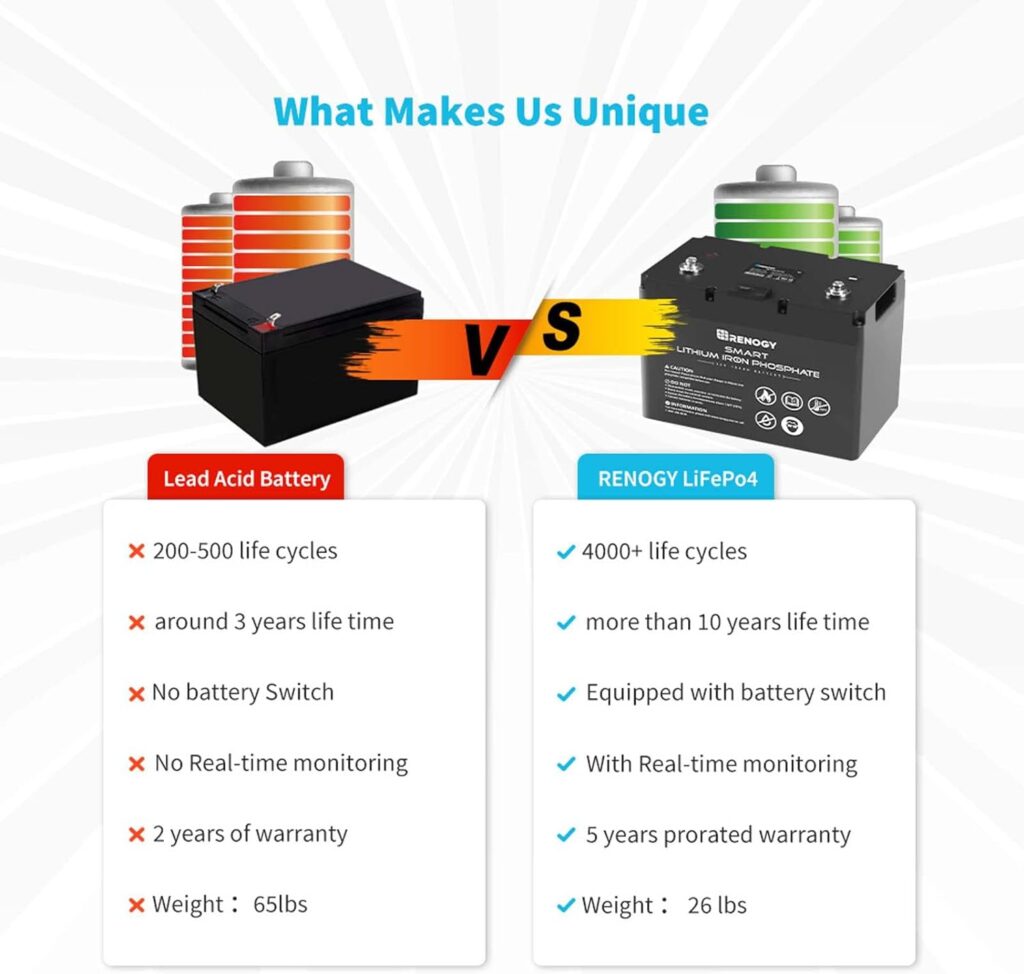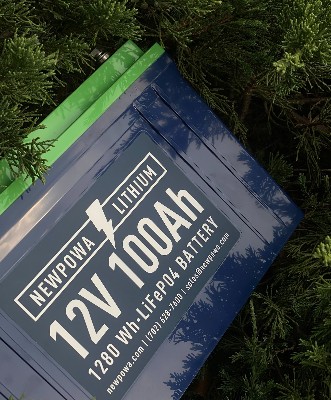Introduction to the Renogy 200Ah Lithium Iron Phosphate Battery
When it comes to powering your adventures, the right battery can make all the difference. Enter the Renogy 200Ah Lithium Iron Phosphate Battery—a powerhouse designed for those who crave efficiency, reliability, and longevity. Whether you’re gearing up for a weekend camping trip or looking to enhance your off-grid solar system, this battery promises performance that won’t disappoint you. With its advanced technology and robust features, it’s time to dive into what makes the Renogy 200Ah Lithium Battery a popular choice among outdoor enthusiasts and DIYers. Buckle up as we explore its specifications, real-world performance, and everything else!
Features and Specifications of the Renogy 200Ah Lithium Battery
The Renogy 200Ah Lithium Iron Phosphate Battery stands out for its impressive energy storage capacity. This battery delivers reliable power for various applications, from RVs to solar energy systems.
One notable feature is its lightweight design, weighing significantly less than traditional lead-acid batteries. This portability makes it easier to install and transport.
Its operating temperature range stretches from -4°F to 140°F, enabling performance even in extreme weather conditions. The integrated Battery Management System (BMS) also ensures safety by regulating voltage and preventing overcharging.
This battery promises longevity with a cycle life of up to 5,000 cycles at 80% depth of discharge. It also offers fast charging capabilities—reaching full charge quicker than many competitors on the market.
Moreover, the Renogy 200Ah Lithium Battery features multiple terminals that allow flexible installation options for different setups.
Performance and Efficiency of the Renogy Battery
The performance of the Renogy 200Ah Lithium Iron Phosphate Battery stands out impressively. With its advanced chemistry, this battery delivers consistent power across various applications.
Users often notice a significant reduction in charge time compared to traditional lead-acid options. This means more energy is stored in less time, making it ideal for off-grid setups or RV adventures.
Efficiency is another hallmark feature. The Renogy lithium battery boasts a high cycle life, providing up to 4000 cycles at 80% depth of discharge. This longevity translates into substantial savings over time.
Temperature resilience adds another layer of reliability. It operates effectively in hot and cold environments, ensuring your devices stay powered regardless of weather conditions.
With minimal self-discharge rates, this battery ensures that you don’t lose power when sitting idle—an essential trait for those who intermittently rely on their batteries.
Advantages of Using a Lithium Iron Phosphate Battery
Lithium Iron Phosphate LiFePO4 batteries offer several key advantages that set them apart from traditional lead-acid options. Their longevity is impressive, boasting over 2,000 charge cycles. This means less frequent replacements and lower long-term costs.
Safety is another critical benefit. LiFePO4 chemistry significantly reduces the risk of thermal runaway, making these batteries much safer for various applications.
Additionally, they provide consistent performance across a wide temperature range. You can expect reliable power delivery, whether in sweltering heat or cold.
Weight savings also play a crucial role in their popularity. Lithium batteries are generally lighter than their lead-acid counterparts, enhancing portability and ease of installation.
Rapid charging capabilities make LiFePO4 batteries ideal for those needing quick turnaround times on energy replenishment. All these factors combine to elevate the user experience beyond what conventional battery technologies typically offer.
Real-World User Reviews
Users of the Renogy 200Ah Lithium Iron Phosphate Battery rave about its reliability. Many highlight its ability to power multiple devices simultaneously without faltering, making it ideal for RVs and off-grid setups.
One user mentioned using it for an extended camping trip. They were impressed by how long the battery lasted with minimal solar input. This efficiency level is a game-changer for those who rely on energy independence.
Another reviewer shared their experience with installation and noted that the setup was straightforward. The lightweight design made handling easy compared to traditional lead-acid batteries.
However, some users pointed out that while the initial cost is higher, they appreciate the long lifespan and reduced maintenance needs over time. Most find value in investing upfront for reliable performance later on.
These insights showcase why many choose the Renogy 200Ah Lithium battery as a go-to solution in various applications.
Comparison of Renogy with Other Batteries
Several key differences stand out when comparing the Renogy 200Ah Lithium Iron Phosphate Battery to traditional lead-acid batteries.
First, lithium iron phosphate batteries have a significantly longer lifespan, often lasting over ten years compared to just a few years for lead-acid types. This longevity translates into lower replacement costs in the long run.
Additionally, the weight difference is notable. The Renogy 200Ah Lithium Battery is much lighter than its lead-acid counterparts, making it easier to handle and install in various applications.
This lithium battery excels in other areas, including charging efficiency. It charges faster and can be discharged more deeply without damaging its cells.
Lithium batteries maintain their efficiency better than traditional options in terms of performance consistency across varying temperatures. This makes them particularly suitable for diverse environments or extreme conditions.
With enhanced safety features against thermal runaway risks, the Renogy 200Ah Lithium Battery offers users greater peace of mind.
Conclusion and Recommendation on the Renogy 200Ah Lithium Battery
When it comes to finding a reliable power source, the Renogy 200Ah Lithium Iron Phosphate Battery stands out in the market. Its advanced chemistry offers a longer lifespan and improved safety compared to traditional lead-acid batteries.
Users have praised its performance, noting that it provides consistent energy output even under heavy usage. This battery can effectively meet diverse power needs, Whether for off-grid living, RV adventures, or solar panel systems.
The lightweight design enhances portability while ensuring robustness—a quality often missed in other options like the RENOGY 100AH LITHIUM or RENOGY 12V 100AH LITHIUM Battery. Its fast charging capabilities also mean less downtime and more time to enjoy your activities.
With numerous positive real-world reviews backing its efficiency and reliability, this lithium battery is an excellent investment for anyone looking into sustainable energy solutions. If you’re considering upgrading your battery setup or embarking on new adventures requiring robust power support, the Renogy 200Ah Lithium Iron Phosphate Battery deserves serious consideration.


